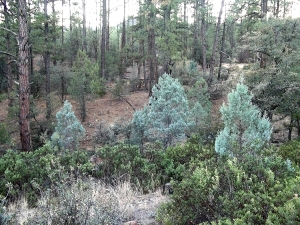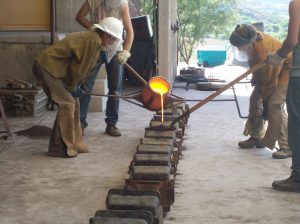“Trees are sanctuaries. Whoever knows how to speak to them, whoever knows how to listen to them, can learn the truth.”
-Hermann Hesse
The last two weeks of the project and I decided to combine the last element and sense into one post due to the interwoven relationship of the practices I chose. The last element is wood and the last sense is smell. Nothing to me smells better than a pine forest after it has rained. If you have never experienced it, think of the smell of your fresh cut Christmas tree times by at least ten, and all of those trees are still alive. The two techniques for these practices come from a book called Your Brain on Nature by Eva M. Selhub and Alan C. Logan.
Technique #1 – Tree Climbing
You want to get in touch with the element of wood, what better way than to go climb a tree. My grandparents had the best climbing tree in their front yard, one of my favorite activities whenever we were there for holiday gatherings. Nobody could get as high in the tree as me (for a ten year old, these were high bragging rights). Selhub and Logan state that do to the inability for many urban dwellers to have access to good climbing trees, there are movements to use tree climbing as an intervention and researchers in Japan are studying the affect of tree climbing on individuals. They claim that climbing a tree will reduce stress and anxiety as well as boost mental clarity and fill the individual with a feeling of vitality.
One afternoon I headed off to the pine forest where I had previously scouted for good climbing trees. I had one particular tree in mind, not a pine tree but an alligator juniper. The tree was perfect but the climber not so much. So it has been awhile since I partook in the childhood ritual of tree climbing, at least the branches were easier to reach. Once in the tree, I admit, I did feel an increase in vitality, a childhood sense of wonder and enjoyment also were in attendance. I can see how tree climbing could reduce stress that is until you have to come down. I thought I had the perfect dismount planned but the tree still wanted to play and grabbed me by the arm on the way out. Hey, what’s a few scratches compared to the joy of climbing a tree?
Technique #2 – Shinrin-yoku – Forest Air Bathing
Also from the book Your Brain on Nature, I learned the concept of shinrin-yoku or forest air bathing. Forest air bathing means taking a walk in the forest while using all of your senses to interact with the environment. Studies from Japan have shown that applying shinrin-yoku while in the forest has noticeable health benefits including lowering blood pressure, cortisol levels, and pulse rate. Pine forests work really well for shinrin-yoku. Evergreen trees emit a natural chemical into the air called phytoncide, for us humans, this is actually an immune booster. So there are many healthy benefits to forest air breathing particularly in evergreen forests.
I put this to the test and was happy with the results. Scientifically I cannot prove the physical affect on my system but psychologically I felt calmer and more at peace and this was after a stressful day in the office.
Project Conclusion
The principle of Forest Air Bathing really sums up the results of this project, the simple act of spending time in Nature will reconnect you with the energies of the Earth and have a positive affect on your physical, emotional, psychological, and energetic systems. Over the course of the past ten weeks, I separated out the focus of each week between the five elements traditionally identified in the Traditional Chinese medicinal practice and the five senses. My findings, while you may focus on one, all senses are alive and Nature is not nicely compacted like your average Wal-Mart superstore. Unless you want to specifically focus on one of the ten, the most enriching moments for me came in the presence of multiple elements and utilizing all of my senses to interact with the environment.
While this may be the end of the project, this is not the end of the blog itself. I plan on continuing my efforts to experiment with different practices to connect with Nature and report on my findings. My hope is that someone will be inspired to try just one of the techniques and find out that it really is beneficial to spend time in Nature and make a concerted effort to go into the wild. It is snowing this morning as I type, although not usually a fan of snow, I have let go of the resistance and look forward to enjoying Nature in all of its seasons. Thank you dear reader for considering my words.

